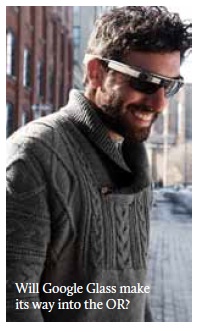8 Future Technology Trends in the OR

- The “internet of things” is a fascinating way to envision the future. We are in the middle of witnessing a significant change in computing where every electronic device is becoming internet aware. Dozens of sensors and devices around our homes, cars, and work are driving endless amounts of data and inspiring a new generation of innovators.
While the development of new smartphone and tablet technology commands a lot of attention, behind the scenes we are seeing things such as internet-enabled toothbrushes and basketballs test the limits on how much extra value-add we need in our lives. look at how wireless AV systems and gesture-controlled technologies
Looking specifically at the OR environment, it is interesting to will revolutionize medicine and improve patient outcomes. Surgeons will be able to view images and other content, as well as seamlessly communicate in real time with experts around the globe.
Here are eight trends growing rapidly in the consumer space that I predict will find their way into the OR in the next few years:
1. Surface computing — Integrating new technology into the OR can be a challenge for integrators. The lack of space, flexibility, and power make this a unique environment. Surface computing takes advantage of super thin, strong, and bendable glass and will replace walls, counters, and even floors with viewable touch screens to interact with content.
2. Wearable computing — If having a computer on every surface isn’t enough, having technology woven directly into clothing and shoes can provide an even more intimate way to communicate and access information. This moves with the medical personnel and allows a more fluid interaction with technology.
3. Google Glass — A technology that will reach the consumer market in late 2013 will have an almost immediate impact in healthcare. Almost in the same way that iPads proliferated in healthcare, I predict that transparent wearable glasses will provide surgeons with the latest research, techniques, and imagery in real time. The ability to record video and narrate from the eyes of the doctor and share seamlessly will revolutionize education and training.
4. Motion — With sensors built into clothing, surgical equipment, and even the patient, new levels of insight into specific procedures and outcomes can be analyzed. Best practices may be multidimensional in the future — going far beyond textbooks and lectures. This also introduces the possibility of robotics — but that is too far out in time for this article.
A daily selection of the top stories for AV integrators, resellers and consultants. Sign up below.
5. Voice — A key technology in a hands-free environment is voice. With improvements in natural speech recognition, as well as expanding
languages and accents, the OR will become an environment that can adapt quickly to different scenarios.
6. Gesture — The OR is an environment where gestures play a huge roll. Much of the communication between the medical team is of a non-verbal nature. Technology has improved significantly in recent years understanding hand, body, and eye movements. Having sensors that are built into surgical devices and monitoring equipment that better understand verbal and non-verbal communication will improve automation in the OR.
7. Eye movement — Eye-tracking technology has been introduced into the bestselling smartphone in the world. Augmenting voice and gesture recognition, eye-tracking technology can drive new levels of sophistication — even in the most focused, handson moments of a surgery.
8. Location tracking — Similar to how GPS technology works outdoors, indoor location tracking can be used in a number of ways in the OR. Understanding who is in the OR and when will ensure that accurate scheduling is achieved, improving patient safety. Integrating these technologies in a safe, secure, and frictionless way will provide levels of automation and measurement never before achieved. Studying OR outcomes, combined with “big data” analytics enabled by these hands-free innovations, will make today’s healthcare professionals better and will revolutionize medical schools going forward.
In the end, patient safety and improved outcomes are the primary objective. Several of these technologies are likely to make a remarkable
difference in the efficiency and effectiveness of the OR in the next few years.
Jay McBain is co-founder and chief social officer at ChannelEyes.
